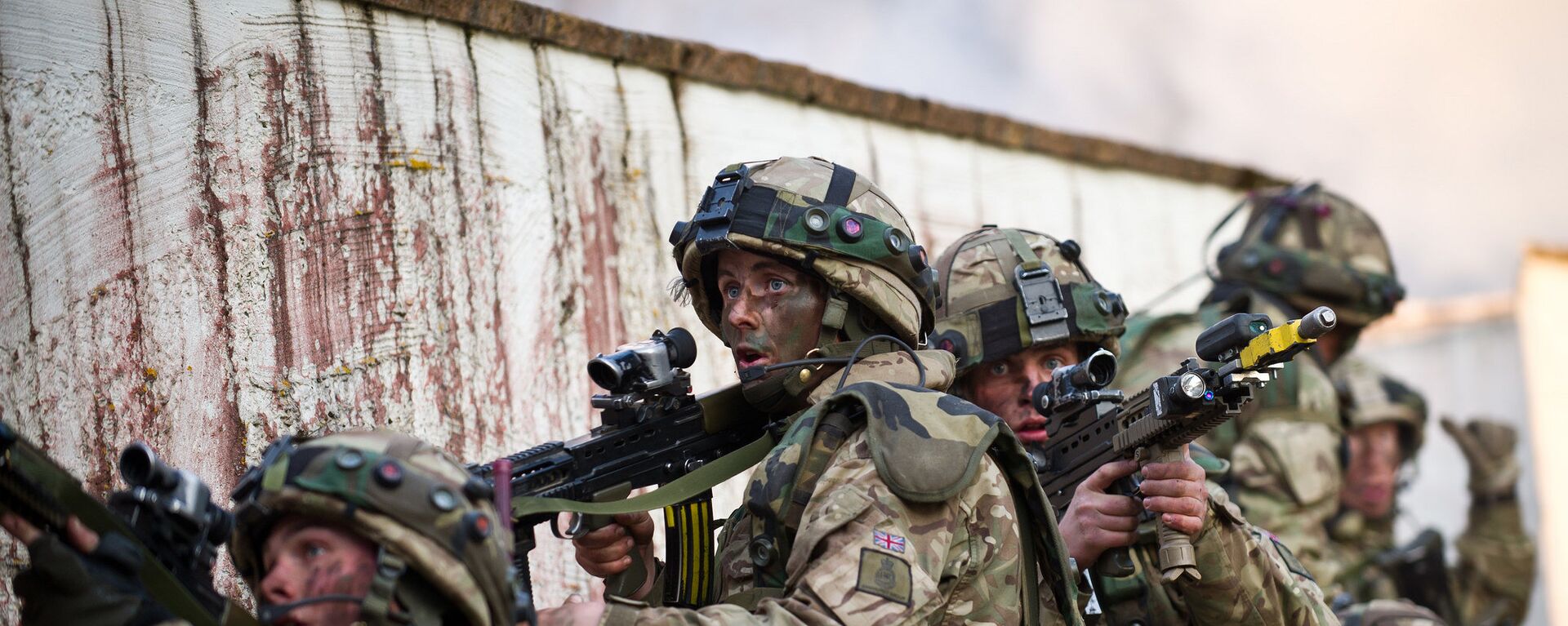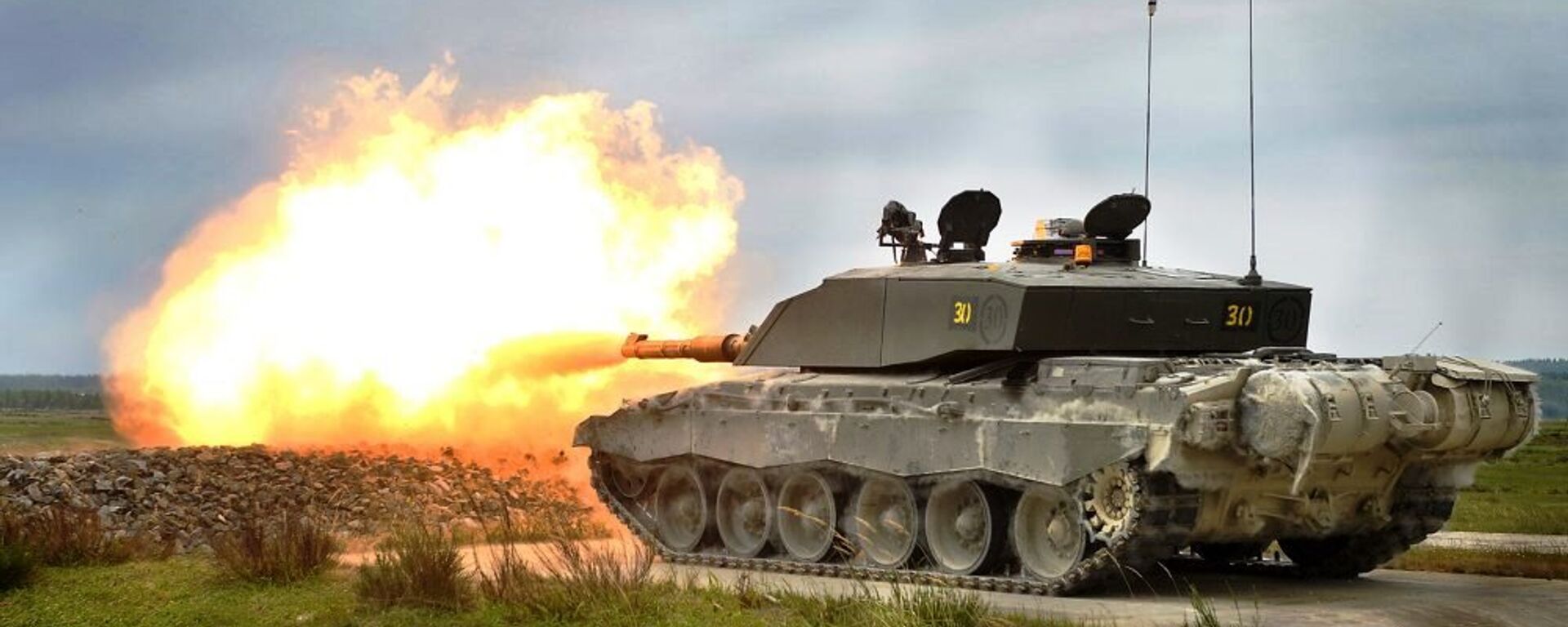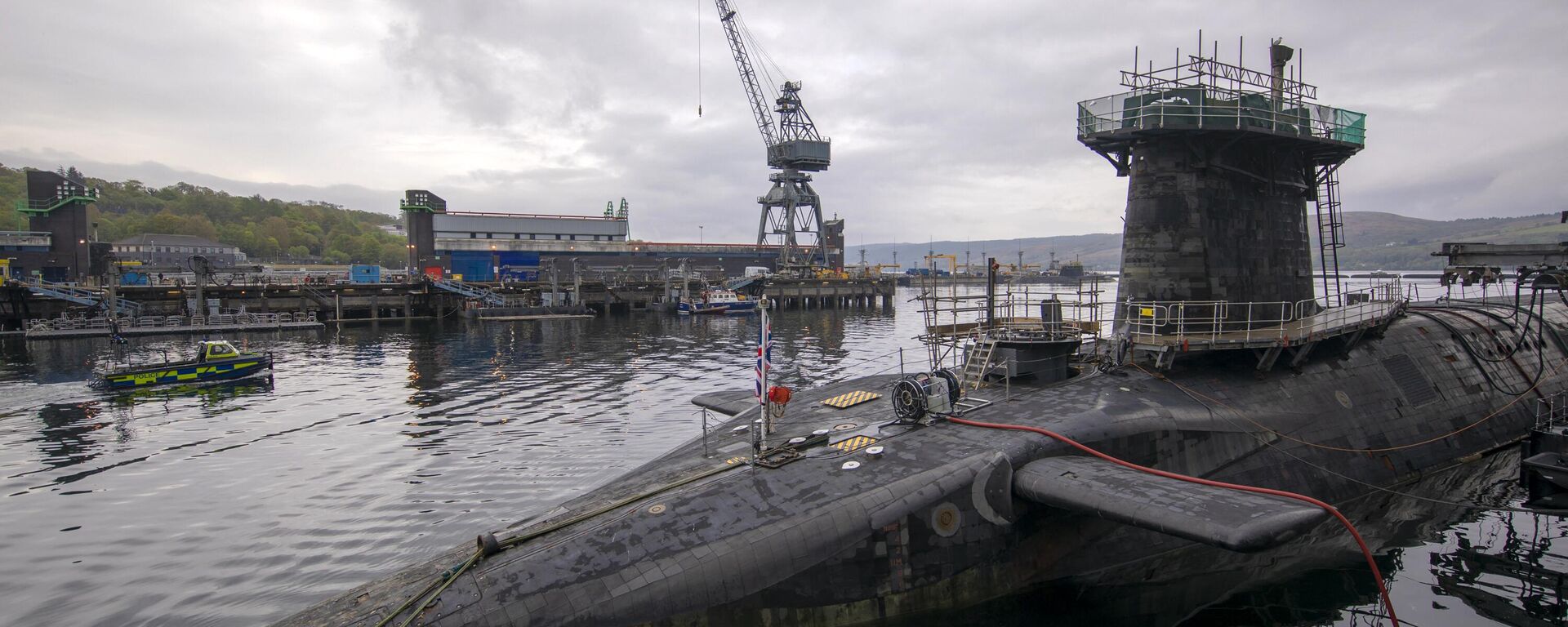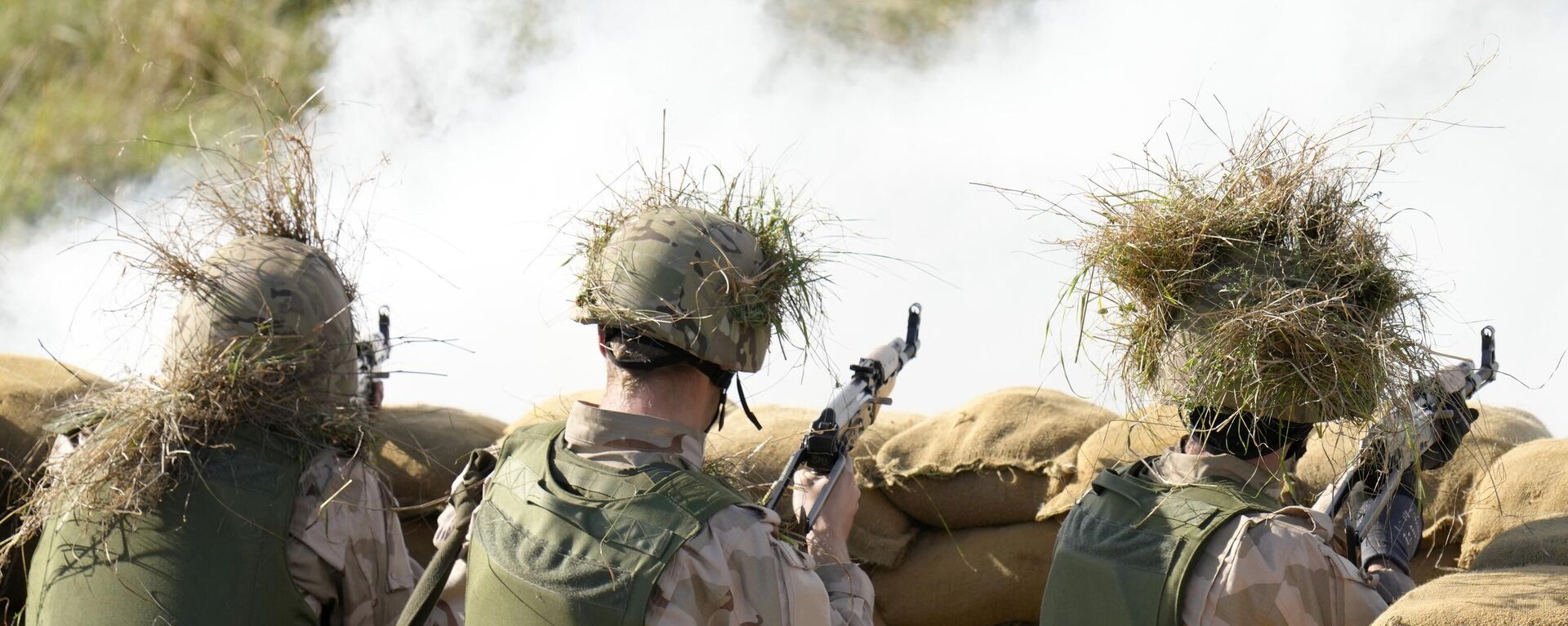How Aid to Ukraine Has Left Britain's Military in a Sorry State
18:55 GMT 06.02.2023 (Updated: 17:06 GMT 20.04.2023)
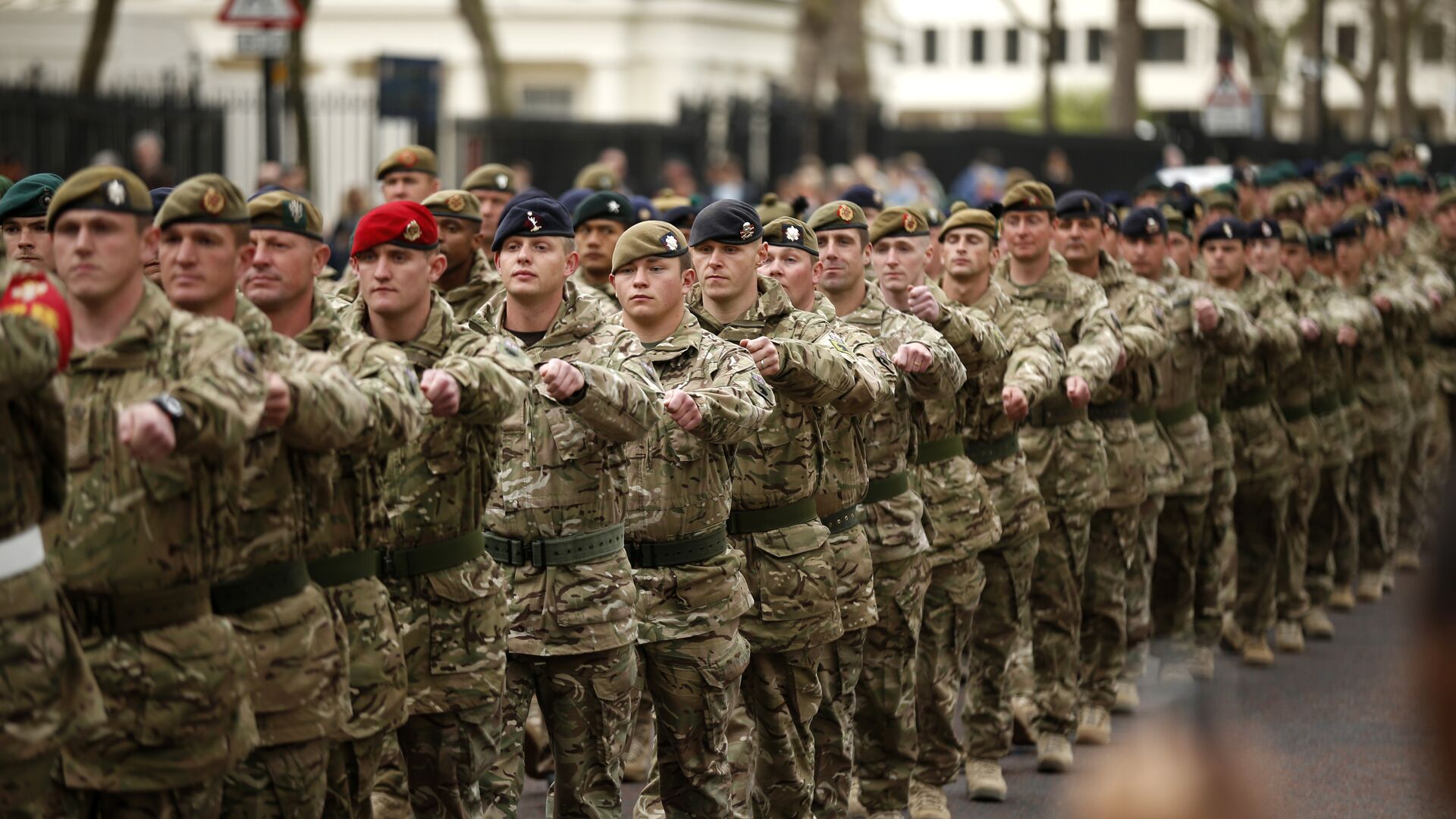
© AP Photo / Matt Dunham
Subscribe
Britain’s Treasury has reportedly made clear that there will be “no new money” for the military despite grumbling from the defense establishment that the Army is being “hollowed out” by gifting equipment to Kiev. The UK’s elite Armed Forces have consistently ranked among the best in the world, but what state are they in today? Sputnik explores.
Anonymous defense sources pricked a big hole in many patriotic Britons’ sense of national pride on Monda, revealing to media that Number 10 has no plans to ramp up defense spending, despite the perceived need to rearm in the face of the Ukrainian security crisis, and the depletion of stocks of weaponry and ammunition.
Sources cited divisions on spending priorities in Prime Minister Sunak’s cabinet, with Chancellor Jeremy Hunt reportedly mindful of potential threats to national security, while simultaneously expressing concerns that there’s simply “no more money” in the Treasury amid competing pressures on the public purse.
The news comes as the UK faces its worst cost of living crises in living memory, with the government facing growing public pressure to address issues including inflation, skyrocketing energy prices, and a looming recession. Ordinary Britons have taken to the streets to air their concerns, with wave after wave of strikes sweeping the country in recent months.
The fiscal crunch has left defense officials groaning over possible cuts, and fearing that the UK won’t be able to meet NATO’s new force structure requirements, which include keeping over 300,000 personnel at a heightened state of readiness, purportedly to “defend itself and deter threats” (i.e. Russia). Britain was expected to commit 30,000 or more troops to this endeavor, but has reportedly so far has only offered a brigade-worth of troops (5,000-10,000 personnel total).
How Much Does Britain Spend on Defense?
The UK spent £48.6 billion on defense ($51.9 billion) in 2022, accounting for about 2.1 percent of the country’s gross domestic product (GDP). NATO headquarters has urged alliance members to increase spending to 3 percent of GDP, while British defense officials have requested a £3 billion ($3.7 billion) annual cash injection. Last September, Defense Minister Ben Wallace calculated that spending should hit £100 billion by 2030, which would allow London to comfortably meet its 3 percent of GDP goals. Amid the current spending crunch, it's now unclear where that money would come from.
How Does Britain’s Spending Stack Up?
Despite grumbling from the defense staff, Britain’s military spending is actually among the highest in the world. According to the Stockholm International Peace Research Institute, the UK accounted for some 3.2 percent of global military spending in 2021, putting the island nation fourth in the world, behind only the US, China, and India, and ahead of Russia, which ranked fifth, in terms of total military expenditures.
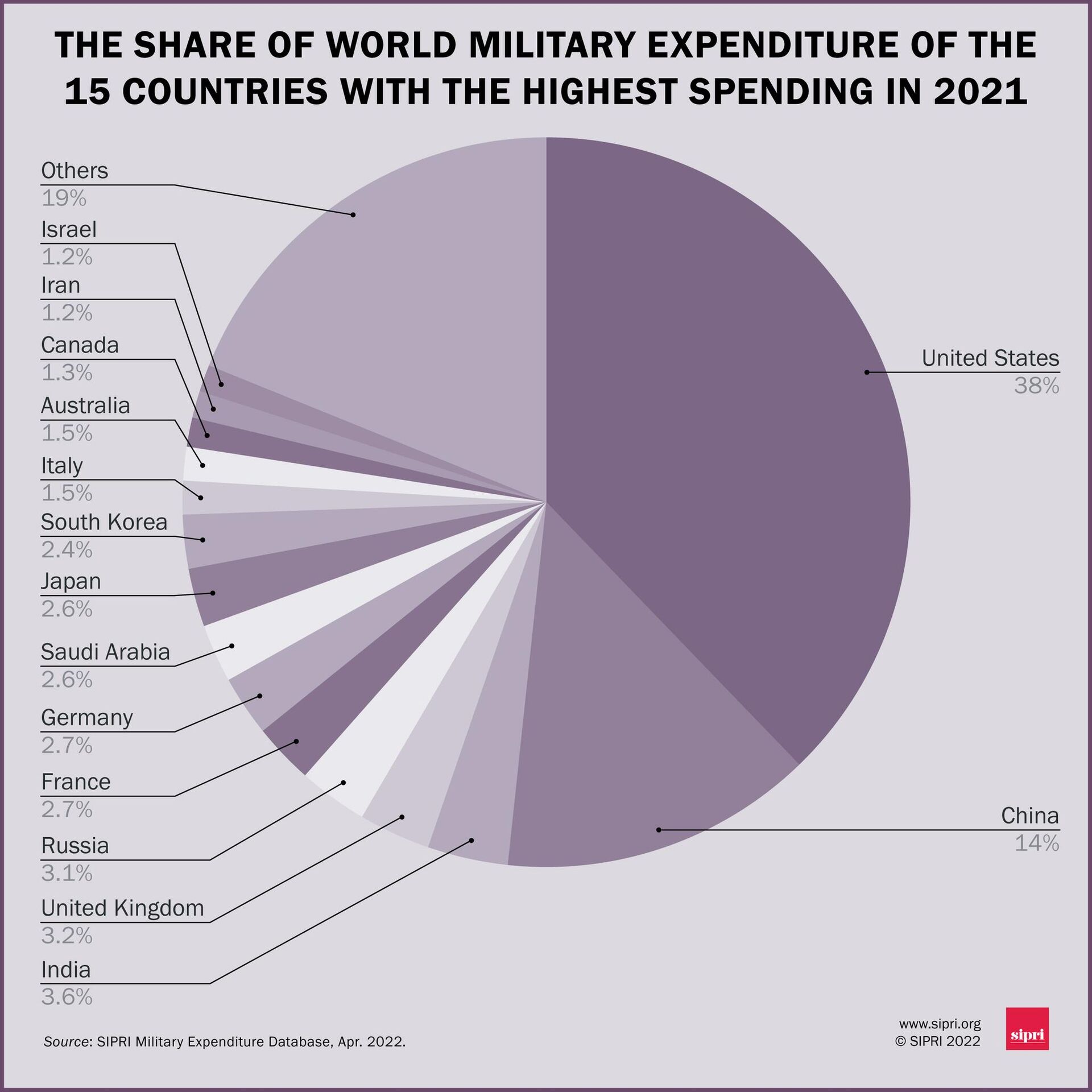
SIPRI chart on world military expenditures in 2021.
© Photo : SIPRI
Within NATO, which accounts for a whopping $1 trillion of the world’s $2 trillion planetary total in military spending, the UK is also among the biggest spenders, with its 2.1 percent of GDP commitment ranking below only Greece (3.76 percent of GDP), the US (3.47 percent), Poland (2.42 percent), and Estonia ($2.34 percent), respectively. All other NATO member countries spend less.
How Many Troops Do Britain’s Armed Forces Have?
What Britain actually gets for this money is another story. The country has long prided itself on its elite, all-volunteer military, with the National Service done away with in 1960. The size of the post-war military has dropped in several waves after World War II, from 868,000 troops in 1953, to 521,100 when conscription ended, 373,000 in 1970, 320,000 in 1980, 305,800 in 1990 and 207,600 at the turn of the century. Through the 2000s, notwithstanding the highly active role the UK played in supporting the US’s global ‘war on terror’, including the invasions of Afghanistan and Iraq, and illegal aerial interventions in Libya and Syria, the size of Britain’s military continued to drop, from 207,000 personnel in 2003 to 170,700 in 2013, to 147,980 active duty personnel as of 2022. The latter figure is divided as follows: 80,730 personnel in the Army, 33,300 in the Air Force, 27,280 in the Navy, and 6,650 in the Marines.
The Armed Forces have had problems with recruitment in recent years, with enlistment and retention figures released by the government last December showing recruitment dropping by nearly 30 percent between 2021 and 2022, with the overall strength of the Armed Forces falling by 3.3 percent during the same period.
Defense experts have regularly sounded the alarm about this state of affairs. “The British Army is one of the best trained and effective anywhere in the world. Unfortunately it has been allowed to get too small,” Matthew Gordon-Banks, a former Tory lawmaker and research fellow at the Defence Academy of the UK, told Sputnik in an interview.
“The challenges for the British Army are considerable, from having effective fighting numbers and maintaining those numbers, equipment and ammunition availability, and the service conditions of service personnel and their families, which has an impact of their fighting effectiveness,” the observer explained.
Armor and Artillery
Britain’s land forces consist of 227 Challenger 2 main battle tanks (14 of which London plans to give to Ukraine), about 89 self-propelled artillery pieces (although all 30, or the Army’s entire stock of serviceable AS-90s howitzers, have been sent to Kiev, according to one report), about 44 rocket artillery systems (at least six of which have been delivered to Ukraine), and about 125 pieces of towed artillery (part of this inventory also sent to Ukraine recently).
Along with weapons, the UK has also sent much of its ammo reserves to Kiev, with one recent estimate suggesting that the country had enough ammunition and artillery shells for just one day of fighting in the event of a hot war with Russia.
How Many Military Aircraft and Warships Does the UK Have?
Britain has over 660 aircraft (530 of them in a state of readiness). Among these are 119 fighters, 26 attack aircraft, 42 transport airplanes, 212 trainers, 22 special-mission aircraft, 9 tankers, 233 helicopters and 33 attack helicopters. Aircraft include Europfighter Typhoon and Lockheed Martin F-35B fighters, Boeing P-8 Poseidon reconnaissance planes, General Atomics Reaper drones, and Airbus Voyagers in their transport and tanker modifications. The UK also has 50 AH-64E Apache helicopters at its disposal, with these servicing the Army Air Corps.
Reports emerged last month that the UK may send some of its Apaches to Ukraine, but the military squashed them as unfounded rumors. At the same time, Number 10 has determined that it would be “impractical” to send combat aircraft east at this time, given their "extremely sophisticated" nature.
As for the Navy, which ruled the waves of the world’s oceans only a century ago, it currently consists of 73 vessels, including 35 patrol and anti-mine craft, 12 frigates, 10 submarines, 6 fighters and 2 aircraft carriers, the HMS Queen Elizabeth and the HMS Prince of Wales. The UK’s sub fleet includes six attack subs and four Vanguard-class ballistic missile subs. The latter have been prone to giving the Navy problems from time to time.
How Has Ukraine Weakened Britain’s Armed Forces?
Britain has led the charge when it comes to arming Ukraine. According to the Kiel Institute for the World Economy’s Ukraine Support Tracker, UK military aid was second only to the US in 2022, amounting to over $2.7 billion, and including everything from the aforementioned tanks and artillery to anti-tank and anti-aircraft missiles, armored vehicles, electronic warfare equipment, training and intelligence support.
Britain’s military brass have complained, both privately and publicly, that the breakneck pace of arms deliveries has emptied reserves of weapons and ammunition far faster than they could be replenished.
Last week, Sir Richard Barrons, former chief of the UK’s Joint Forces Command, expressed concerns about the current situation. “The UK spends more on defense than any EU ally and our brave Armed Forces have long been one of Britain’s most influential levers around the world. Yet for decades they have been hollowed out by spending cuts,” he said.
Separately last week, anonymous officials complained to local media that Prime Minister Sunak’s approach has been to “cut the Army, hollow it out further by gifting [equipment to Ukraine] with no plans to replace [equipment] for five to seven years.”
All this has apparently had an impact on the UK’s perceived status among allies, with a US General reported to have told his British counterparts that their nation is no longer considered a “tier one” military, and “barely tier two,” in the Pentagon’s book.
Earl Rasmussen, a retired US Army Colonel and Executive Vice President of the Washington-based Eurasia Center, concurs with this assessment. He told Sputnik that while Britain's military may still rank among the top ten in the world, "they are no longer the 'elite' force that they once were."
"Force structure and readiness has declined steadily over the past 20 years. Moreover, systems are over budget, delayed and insufficient to meet force structure requirements. Reserve forces make up almost 30% of high readiness forces," Rasmussen explained.
Matthew Gordon-Banks agrees that aid to Britain’s continued military support for Ukraine faces serious constraints, both in terms of the availability of war materiel and the country’s economic capabilities compared to the US.
“The UK does not have the military resources to supply Ukraine in the same manner as the United States, which is why Britain has been concentrating on training Ukrainian troops in the UK. The UK is also unable to almost limitlessly borrow money in the same way that the US appears able to do. The UK also is able to provide a wide range of intelligence information, having a very effective ‘eavesdropping’ electronic monitoring operation,” the observer said.
Long-Term Problem
Rasmussen believes that even if the UK increased spending now, "it would take perhaps a decade or more to fill" existing "gaps" in capabilities. For example, "while manpower could be increased quickly, increased force structure would necessitate training and equipping. These are critical areas, which fixes would not happen overnight. Moreover, I do not believe that it is in the UK best interest to strive to be a global power but rather best focus on regional issues or continued participation with NATO or allied operations," the observer said.
Pointing to the strain that has been placed on Britain's military through assistance to Kiev, Rasmussen noted that along with potential NATO operations abroad, standing armies are also meant to support critical needs at home, such as border patrol and filling the gaps in civilian missions, such as the provision of emergency medical assistance. "The support provided for Ukraine has significantly drained already limited capabilities," he said.
On top of that, the 20+ year veteran of the US Army noted that Britain is "struggling on all fronts of the logistic chain" when it comes to supporting Kiev. "The UK is being called on a lot but the drain being placed on ammunition and weapon system availability and readiness puts their own national as well as NATO’s security and ability to conduct additional contingencies operations at risk in the long term," Rasmussen concluded.
